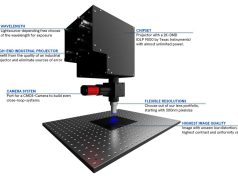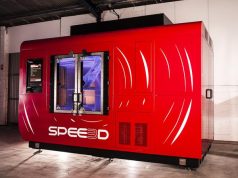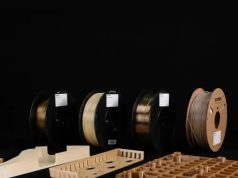In the defense industry, the availability of spare parts, particularly for legacy systems, is an ongoing challenge. Babcock International Group, a trusted partner of the British Army and the UK Ministry of Defense, in collaboration with Plastometrex, a provider of advanced mechanical testing technologies, has developed an innovative approach to overcome this challenge: using additive manufacturing (AM) to re-produce obsolete parts.
Many defense systems rely on components that are no longer available on the regular market. AM, also known as 3D printing, enables the rapid production of small batches or one-off parts and offers a solution to the problem of parts obsolescence in the defense industry. To expand their capabilities and increase speed in the AM design and qualification process, Babcock has entered into a strategic partnership with Plastometrex. They will use Plastometrex’s innovative benchtop plastometer for mechanical testing of AM parts, which will be performed by Babcock’s partners at Additure.
While conventional tensile tests on AM parts usually rely on specimens, PIP (profilometry-based indentation plastometry) testing enables direct testing on a 3D printed part at multiple locations. This provides a much more detailed understanding of the mechanical properties of the part in a fraction of the time. The benchtop plastometer is also an easy-to-use solution that also eliminates the need for extensive machining capabilities for these tests.
For obsolete parts where design data is lacking, Babcock will use PIP technology to quickly build a comprehensive understanding of the mechanical properties of each part. This enables them to additively manufacture and reconstruct new parts that are fit for purpose.
Lewis Corbett, Design Engineer at Babcock commented: “In the absence of design data, the Plastometer empowers us to analyse the original mechanical properties of the part. Once the part has been additively manufactured, we can compare the properties against those of the original part, ensuring our decision-making process is highly informed.”
Dr Max Burley, Chief Hardware Engineer at Plastometrex had this to add: “With this partnership between Babcock and Plastometrex, AM retrofits are no longer limited by long turnaround times or poor-quality assurance procedures. We are incredibly excited to play a part in revolutionising how MRO services are delivered across industries with unprecedented speed and precision.”
The potential of AM for the defense industry is undeniable. By working together, Babcock and Plastometrex are now proving that this exciting new technology is not only promising, but that the adoption of AM is both realistic and achievable.
Subscribe to our Newsletter
3DPresso is a weekly newsletter that links to the most exciting global stories from the 3D printing and additive manufacturing industry.
























